Middle Grade Voice
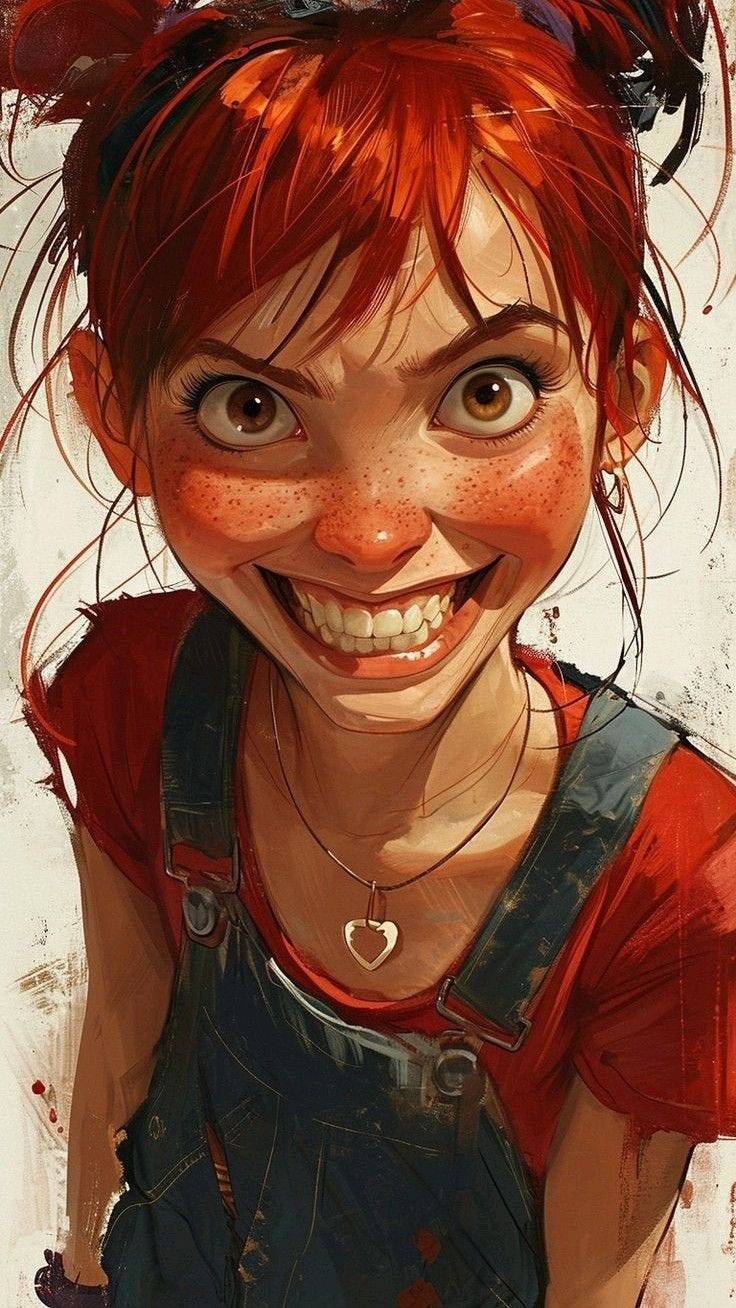
Oooohhh, middle grade, how I love thee. It’s such a big playground to run around in. It can be heartfelt, a space opera, a fantasy quest, a mystery, or even romantic. It’s got characters of all types. But above all, I think there’s something that sets it apart, and that really makes a middle grade a middle grade.
Voice.
Voice isn’t a unique tool to middle grade, by any means. But in middle grade, let’s say it’s much more load-bearing than in other genres. You can have a great thriller with a meh voice if the plots are twisty and the pace is high-octane. You can have a great romance with meh voice if the characters are endearing and the kisses are swoony.
But I’m not so sure middle grade can really middle grade without great voice.
In fact, some of my favorite middle grades—those quiet ones—have very mundane plots, but man oh man do they stick with you. That’s because of voice.
“A writer's voice is not character alone, it is not style alone; it is far more. A writer's voice line the stroke of an artist's brush- is the thumbprint of her whole person- her idea, wit, humor, passions, rhythms.”
Patricia Lee Gauch
We won’t get too into the weeds here on defining what voice is, because that’s a nebulous and ineffable endeavor in the first place. Suffice it to say, if you’re writing middle grade (or any kid lit, really), then voice is something you need.
So…how do you, like, get it?
Well, the good news is that I don’t think it’s something you get, I think it’s something you already have that you have to let loose.
So how do you unlock and free your middle grade voice? I don’t know exactly, because the point of voice is that it’s so unique and individual. But I can give you one practical tidbit that’s been very helpful for me.
.
.
White space.
.
.
Ok, here’s what I mean.
I’m talking about approaching the page a little bit more like a canvas. A little bit more the way a graphic novelist or illustrator approaches the page. (This week
wrote a great post about how panel borders totally alter and impact the feel of a page, and white space can alter the feel of our pages too.)I believe we writers can think this way too, even if our medium is words.
And I believe that by thinking of things in this way, it unlocks a playfulness and a freedom in our words themselves that will let your middle grade voice sing at its fullest volume. I know it’s been a huge help for me.
The best way to illustrate (pun intended) what I mean is by showing some examples. And really the point I’m trying to get across here isn’t that you need to do it like these folks did, but that there are soooo many ways to play with space on the page and probably so many that nobody’s thought of yet.
And as we go through these examples, pay attention not to the words themselves, but to the vibes that come from the overall layout of the page.
Verse
One very explicit way to play with space on the page is verse. I did this in Nightmare House.
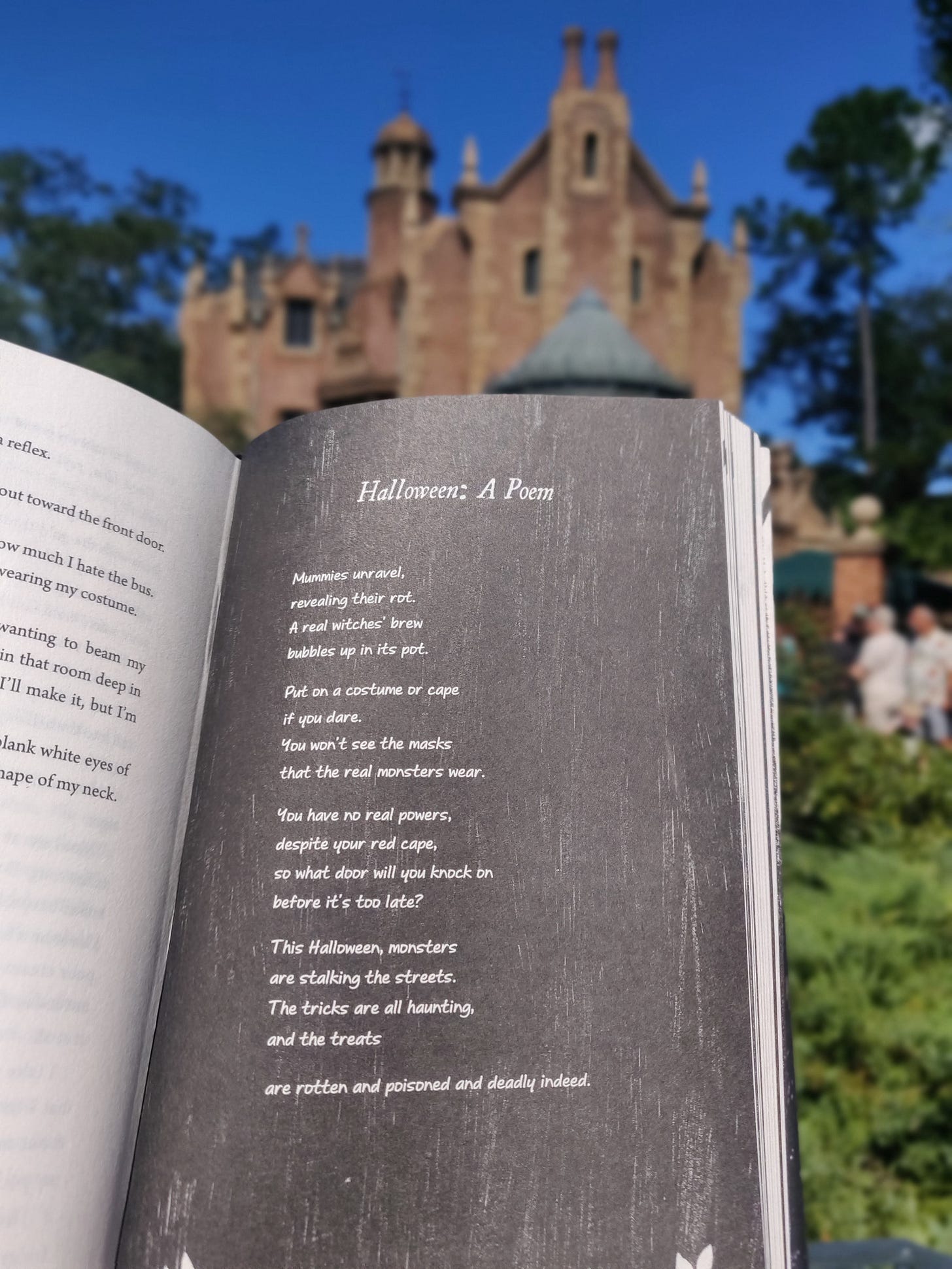
Another example of this is the incredible verse novel Forget-Me-Not by Ellie Terry. I love the way she plays with both regular poetry and micro-prose-poem type chapters. Or whatever you want to call it. That’s the point—this can feel like art, no matter what the label is!
Fonts and Footnotes
Let your narrator be snarky in the comments! Let your fonts work like voice actors in your text!
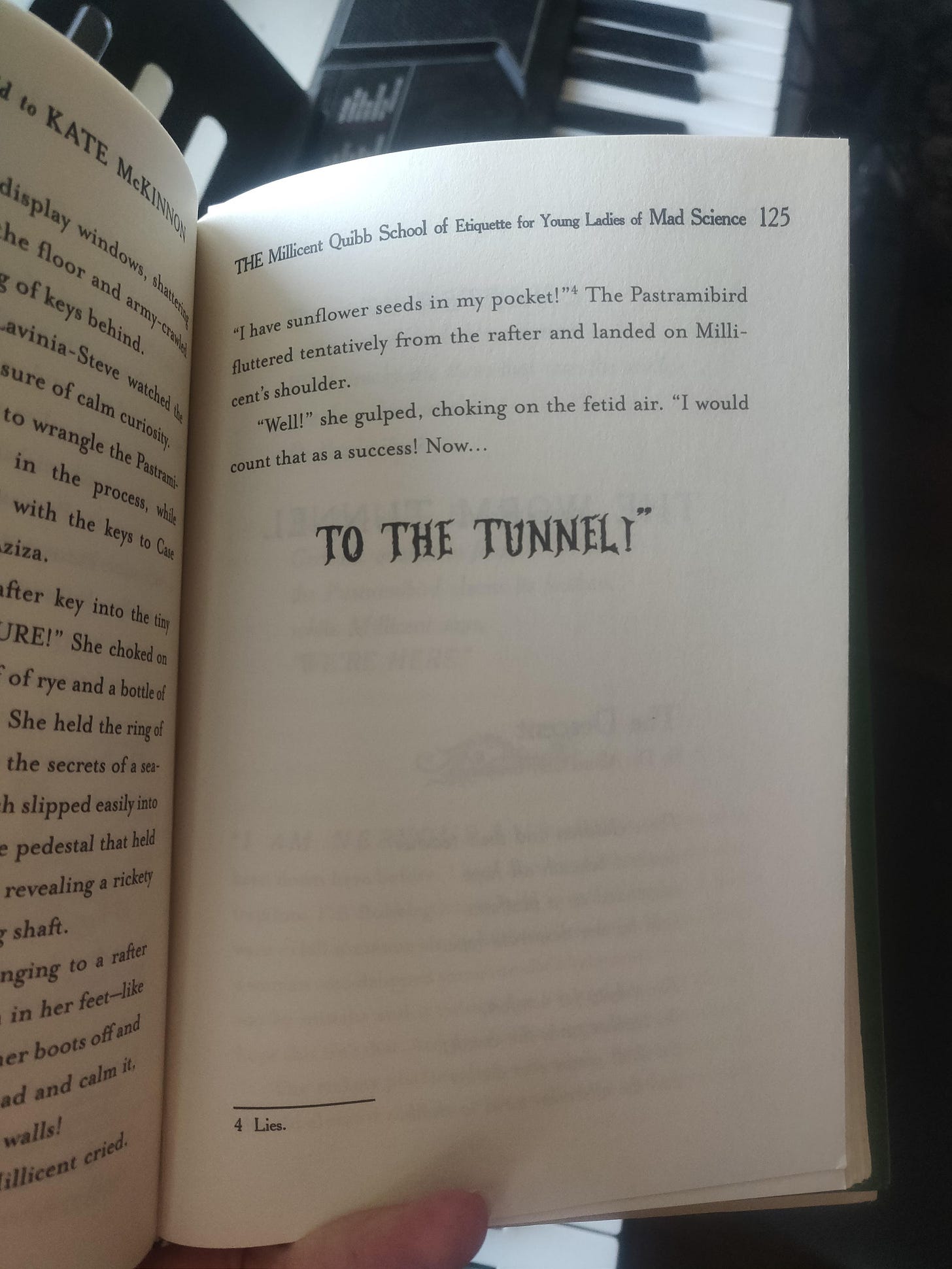
Now isn’t this a bit gimmicky, I can here some doubters saying. Well…maybe? Yes. I don’t know. Maybe I don’t care. I care more about if it’s fun. I mean, yes, be wise and craft carefully, including with your white space, but the point of this is to be as full volume yourself as you can!
Short chapters and hermit crabs
There’s a type of essay called a hermit crab essay because it’s essentially an essay that moves into the house (shell) of something else, like an email or a recipe or podcast or school quiz. Well, let’s do that too!
Look at
’s The Absolutely True Diary of a Part-time Indian as an example. The short chapters and hermit crabbing in this book really unlocked things for me when I was writing What Stars are Made Of.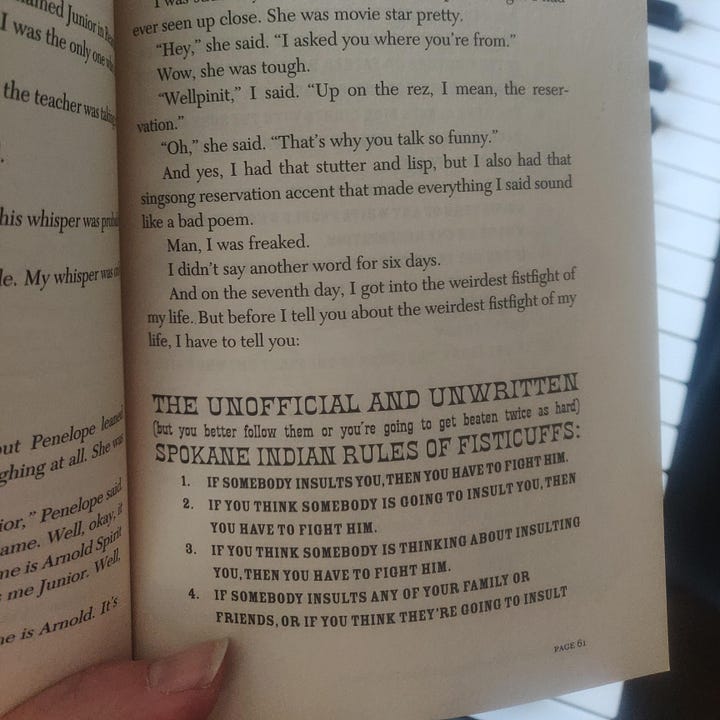
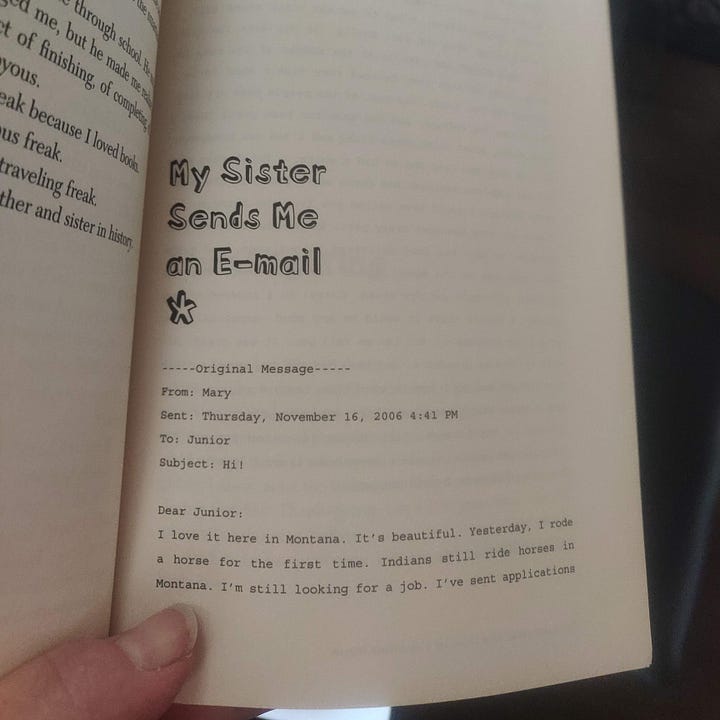
Single-line Paragraphs
Let’s look to a modern middle grade classic: The One and Only Ivan by Katherine Applegate.
Now isn’t that just the most pleasing and visually satisfying page of a book you’ve ever seen? (Patricia Castelao’s gorgeous illustrations definitely help). How lovely is it to have such a powerful page with only twelve words on it.
And she does this on each page. Sentences are short, and paragraphs are one or two lines long. It’s a kidn of prose poetry.
Sections and Interuptions
Another of my modern middle grade favorites: The Inquisitor’s Tale by Adam Gidwitz.
Inside of those amazing border illustrations by Hatem Aly, see that set apart section on the left page, interupting the story with lines and a new font? So, so fun, and totally fitting for the content of this book.
Get artsy
And speaking of illustrations…I’m going to suggest something a bit intense, but here goes: why not try it yourself? And I honestly mean it when I say that this can be a fun experiment, and you don’t have to consider yourself a genius illustrator or artist to add something that makes the book even more voicey, and even more your own. And what if all you need are textures and splotches?
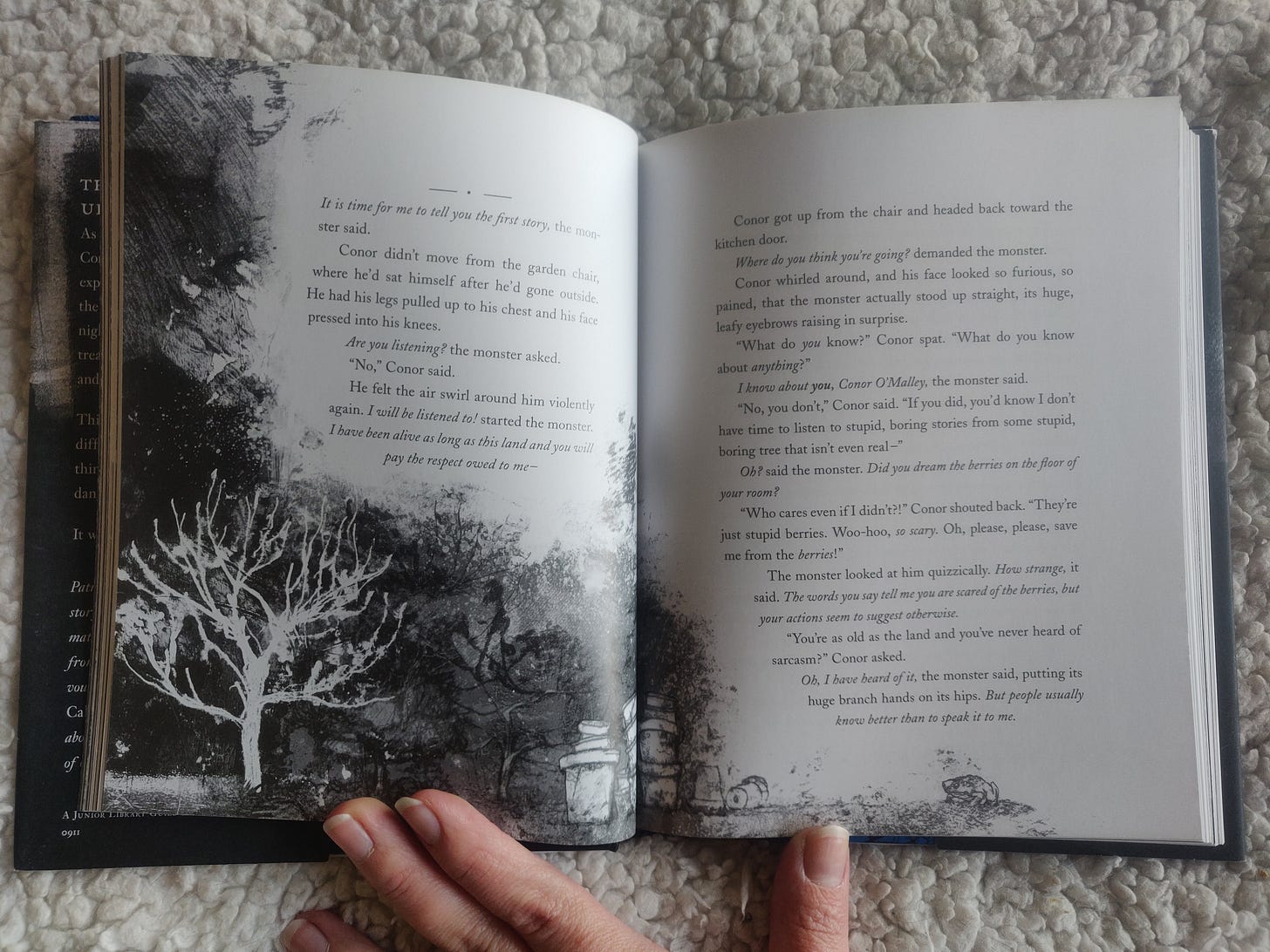
Or it can be silly and doodly. Look no further than Cressida Cowell!
If you aren’t interested in experimenting with your own illustrating, that’s totally fine! You can still play around with layout and white space on the page. But if you are interested at all, then go go go! Don’t let self-doubt stop you. Honestly, you can do this. Check out YouTube tutorials and awesome online illustration classes from places like SVSLearn and 21-Draw and follow along with amazing stackers like
, , , and . You. Can. Do. This.***
Okay, I’ll stop there, but if you can think of other examples or ideas of how form and white space can reveal and strengthen middle grade voice, please share!
And now go and let your weirdo middle grade flag that’s full of white space fly. Learn grammar rules and then twist ‘em. I’ve read a few middle grade books lately that felt so…formal? Almost? Bland. Because even formality and properness can be unique and voicey.
The point is, take the mute off your trumpet and blow.
The Smorgasbord is a hand-kneaded, hand-shucked, reader supported publication. To keep it cooking, become a paid subscriber and get access to special publishing resources, writing classes, the query letter that got me 4 agent offers, and more!
7 Side Dishes Worth Sharing
Are you an expert at reading cursive? It’s a dying skill and the national archives is looking for it!
If you need some extra reminders of the good things lately (don’t we all?) check out
’s List of 100 Things That Made My Year (2024). Just reading through it made my whole day better.Thanks to
for sharing this delightful video of Jane Fonda’s thoughts on aging.For even more happy thoughts, check out
’s hilarious and awesome TED talk about how to find laughter anywhere.In bad news, The Onion has reported that our children are not learning enough about whales.
This.
What are your favorite sides lately?
Teachers, librarians, and homeschool parents, I would love to do a free virtual Q&A with your class or book group! If you’re interested in scheduling a visit you can reach out to me via my website. Let me know how I can support you! I’ve also got free classroom resources to accompany each book, and make sure to check out Tools Not Rules: A Writing Guide for Young Creatives. You guys are rock stars!
Thanks for reading!
Thanks for coming along everyone! 1) Subscribe, 2) get a copy of the book bebes, and 3) keep glowing, you shining star you.
-Sarah




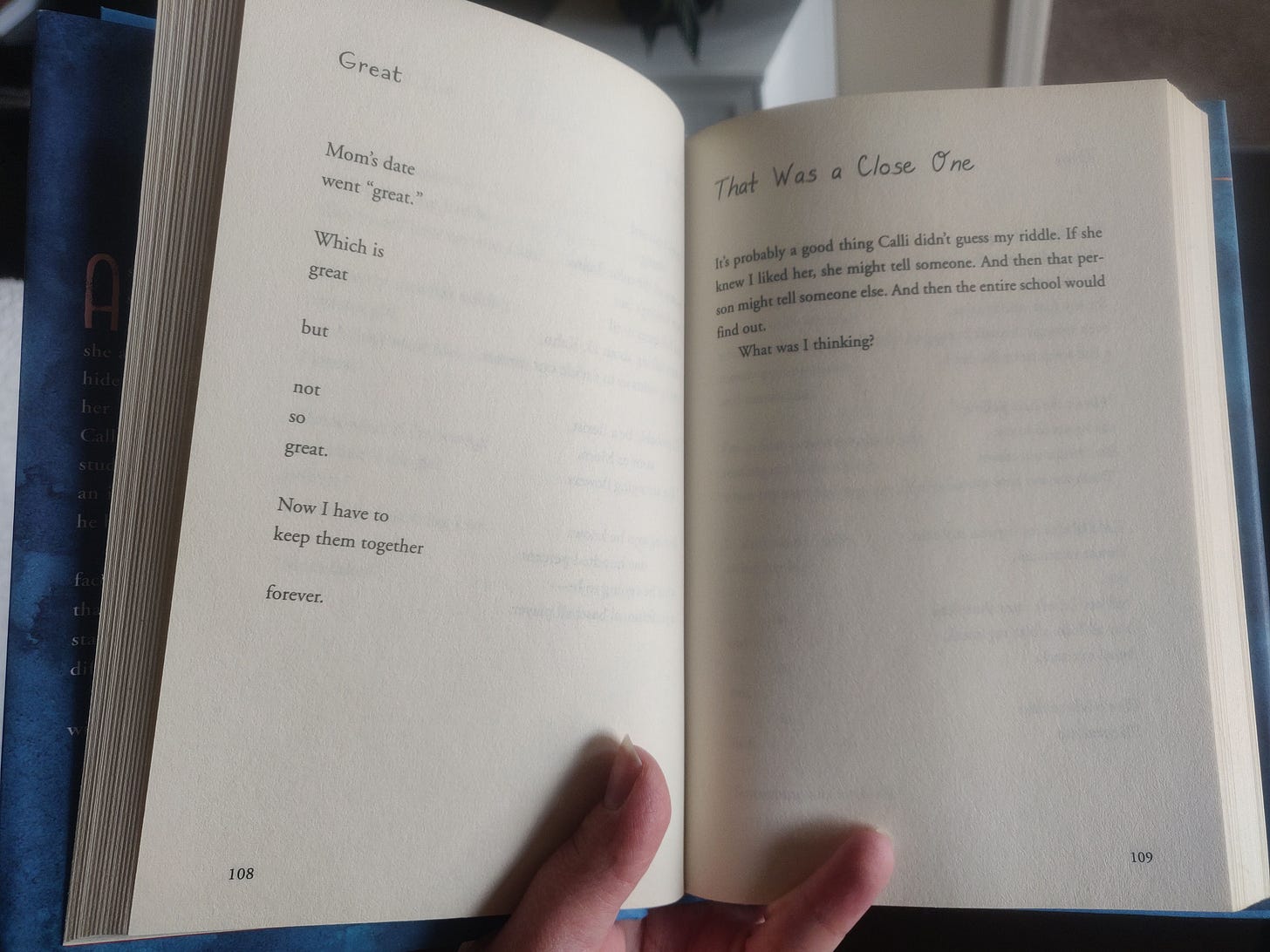
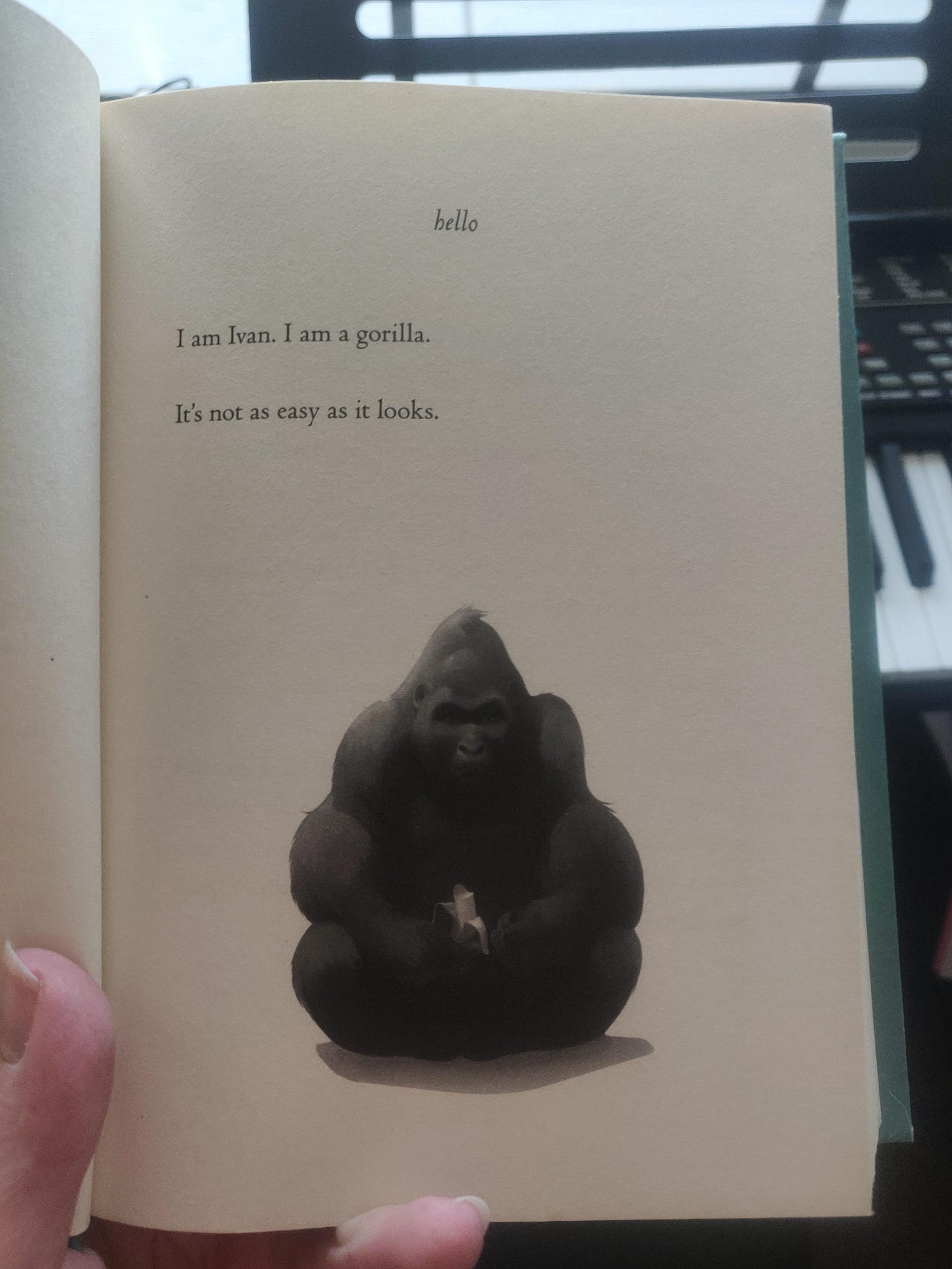
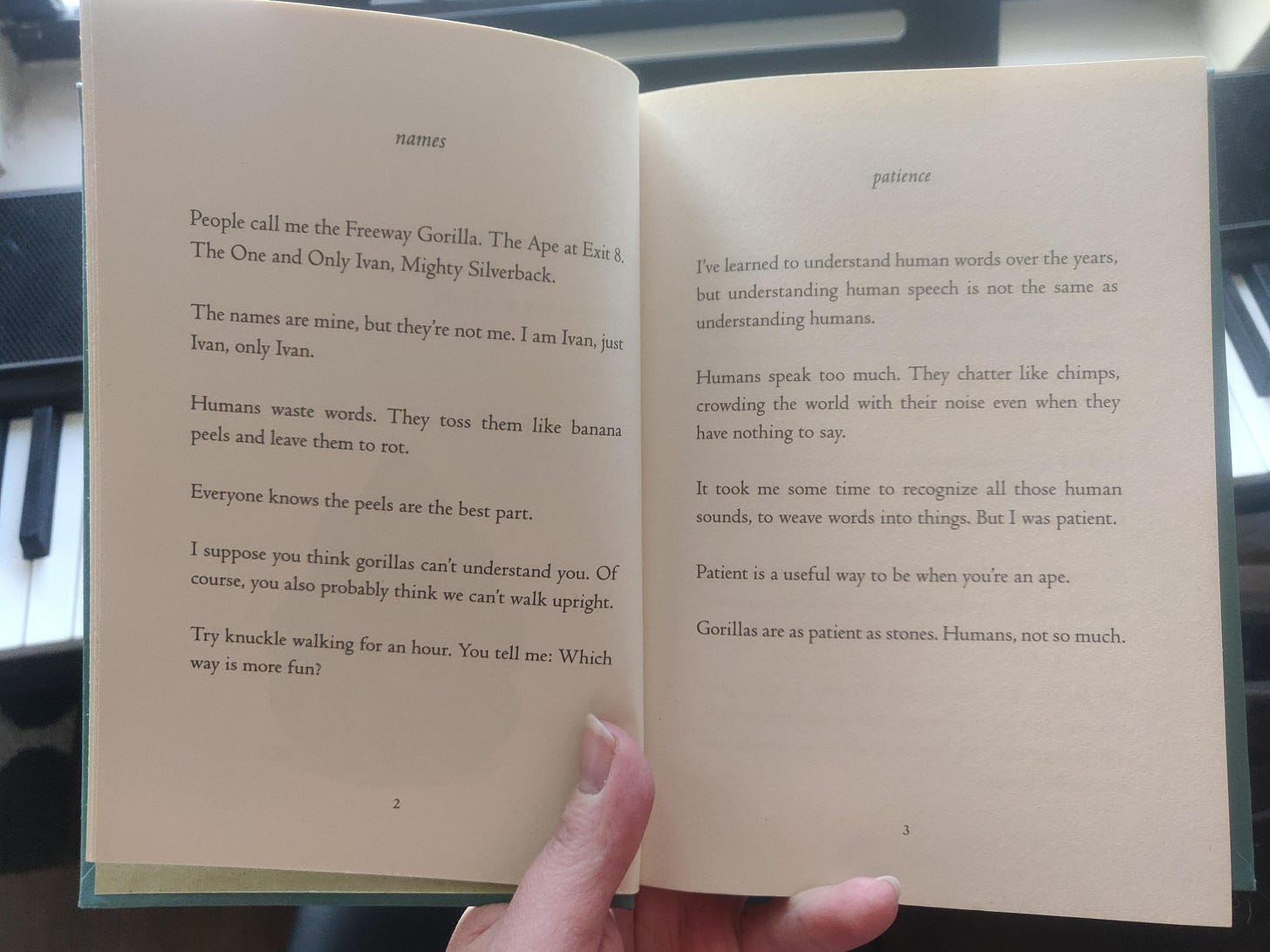
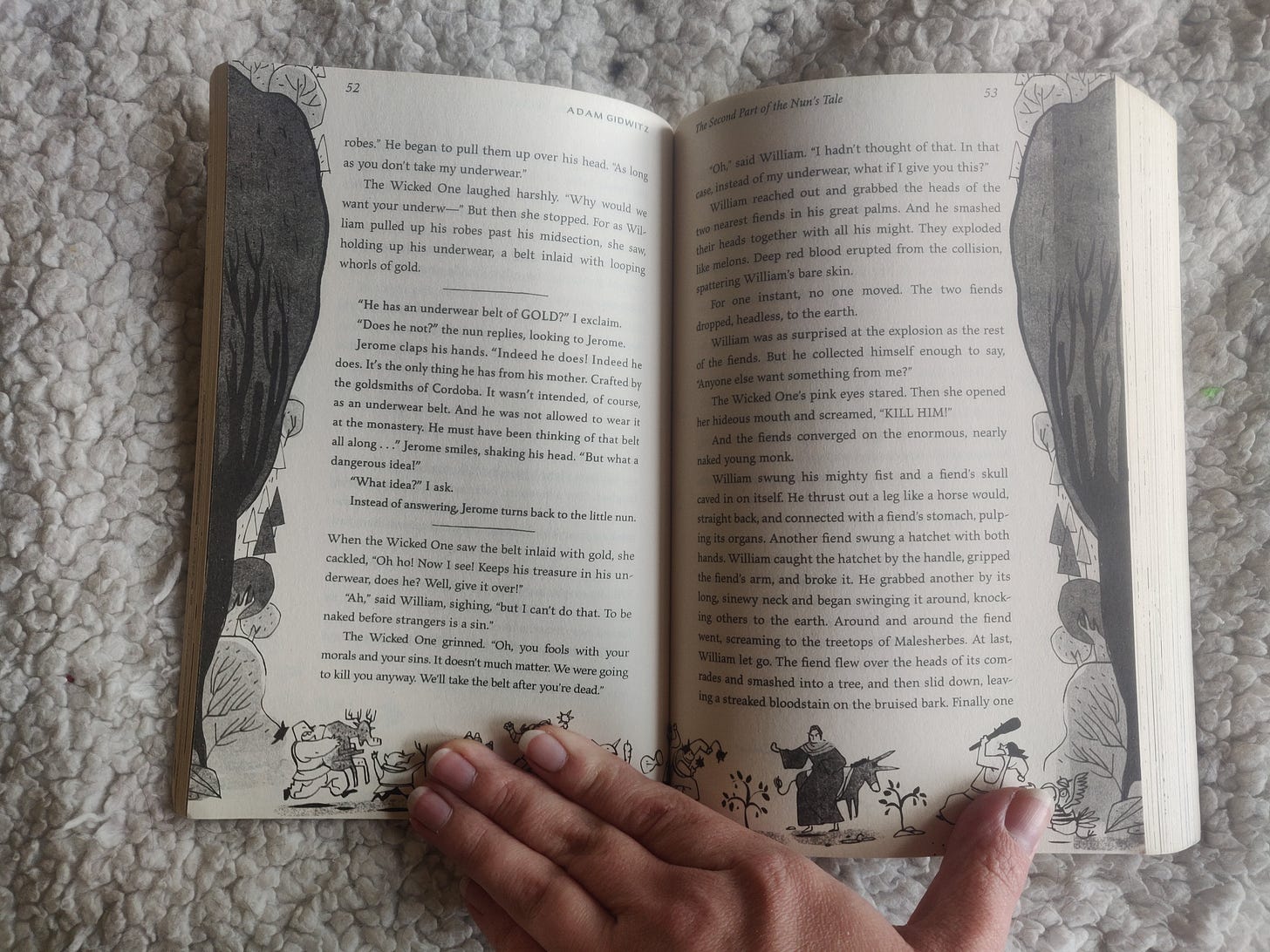
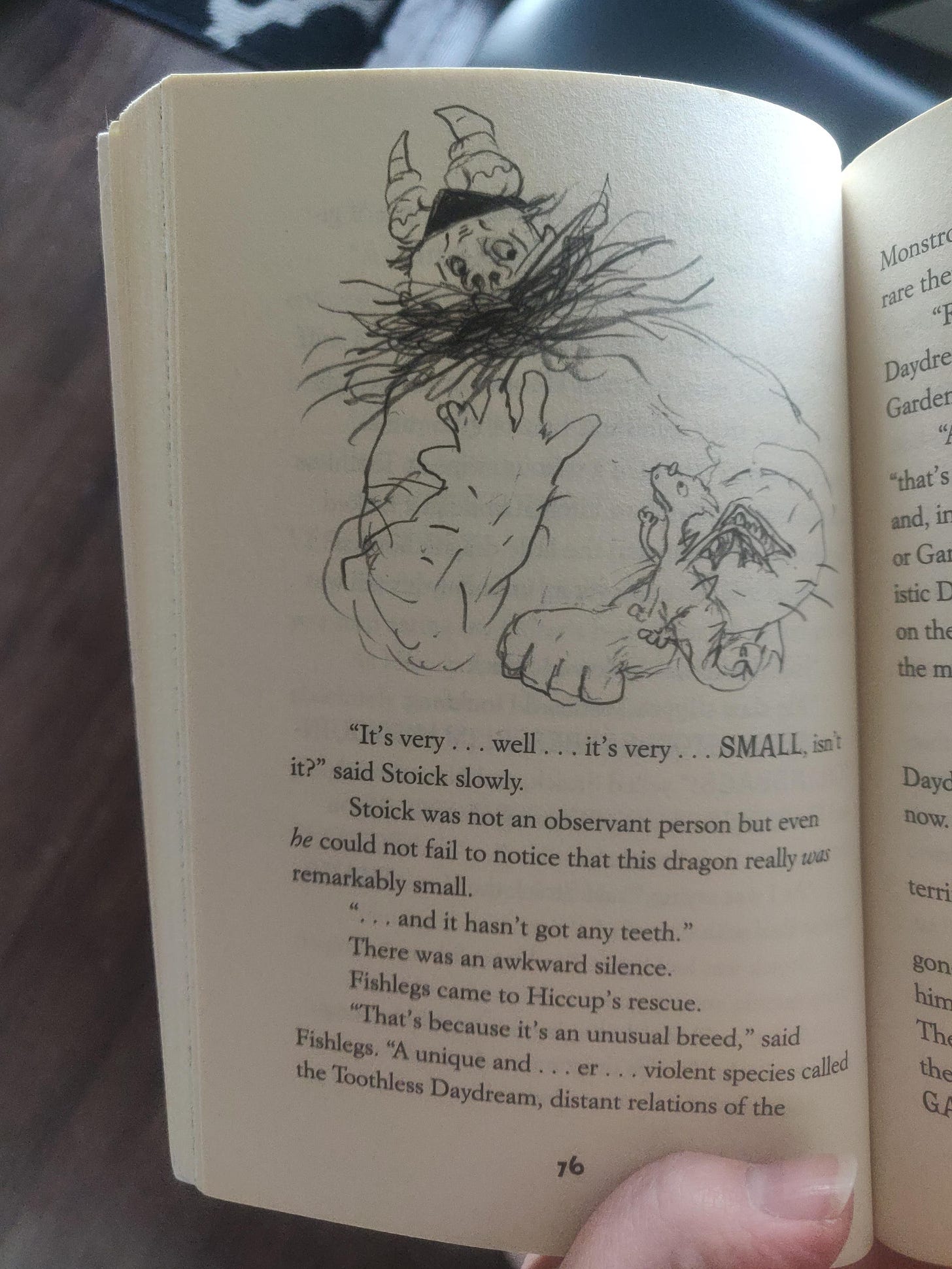
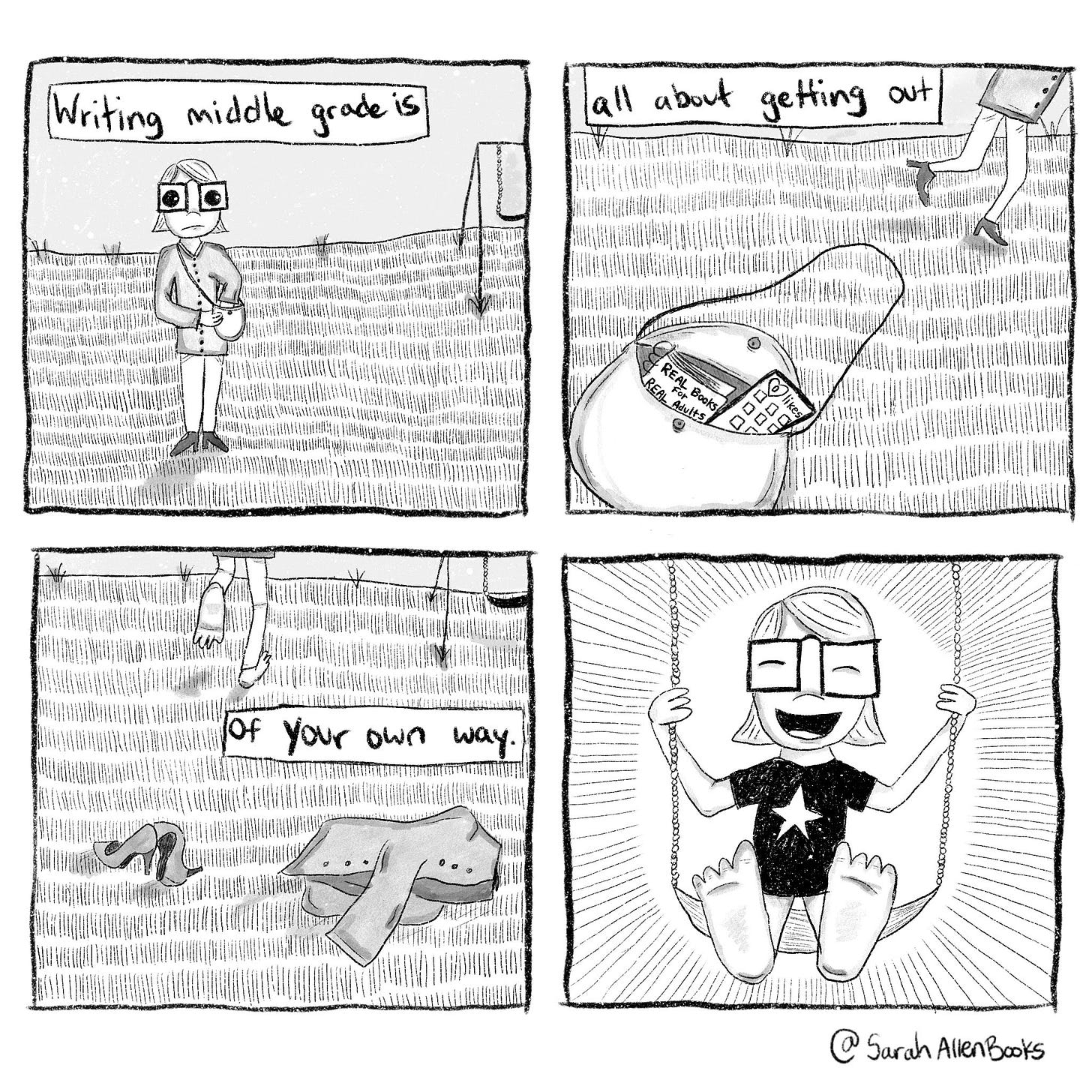

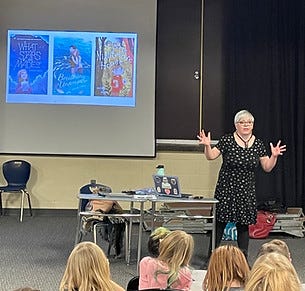
What a great list! I love love love what you said about white space and approaching the page like a canvas - so true! Also, thanks for the shout out Sarah!
I love Kareem Between by Shifa Saltagi Safadi for this exact reason! I love how she lays out her verses! I read the audiobook first and when I flipped through the pages I was so excited to read it all again!